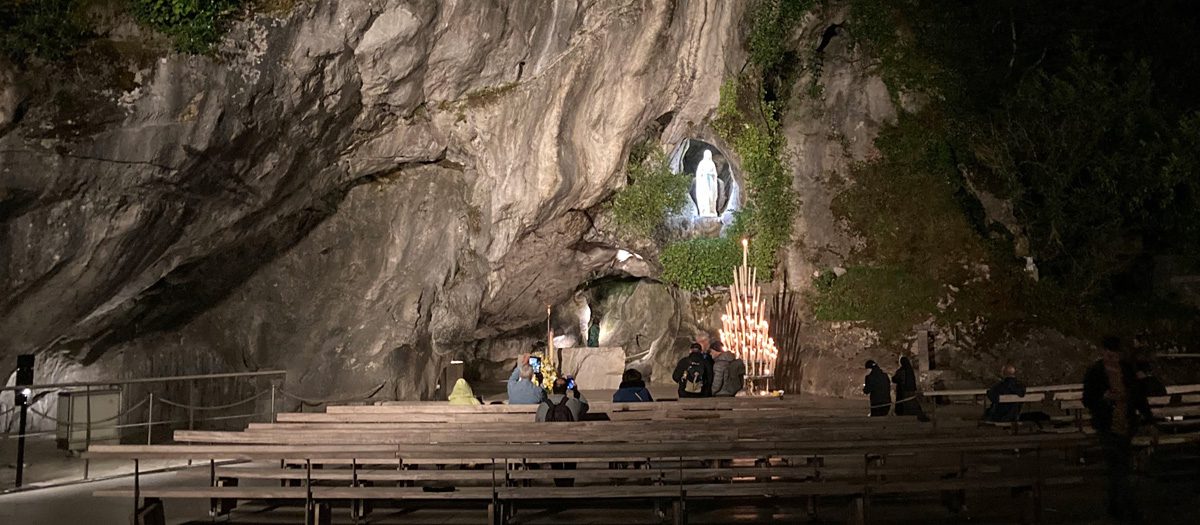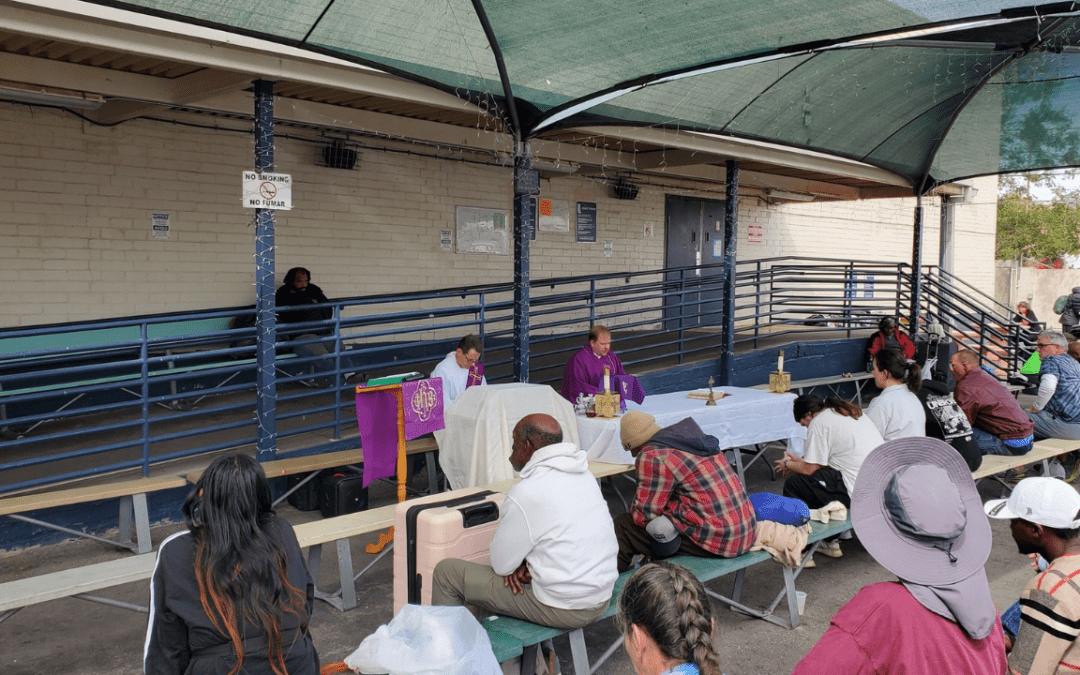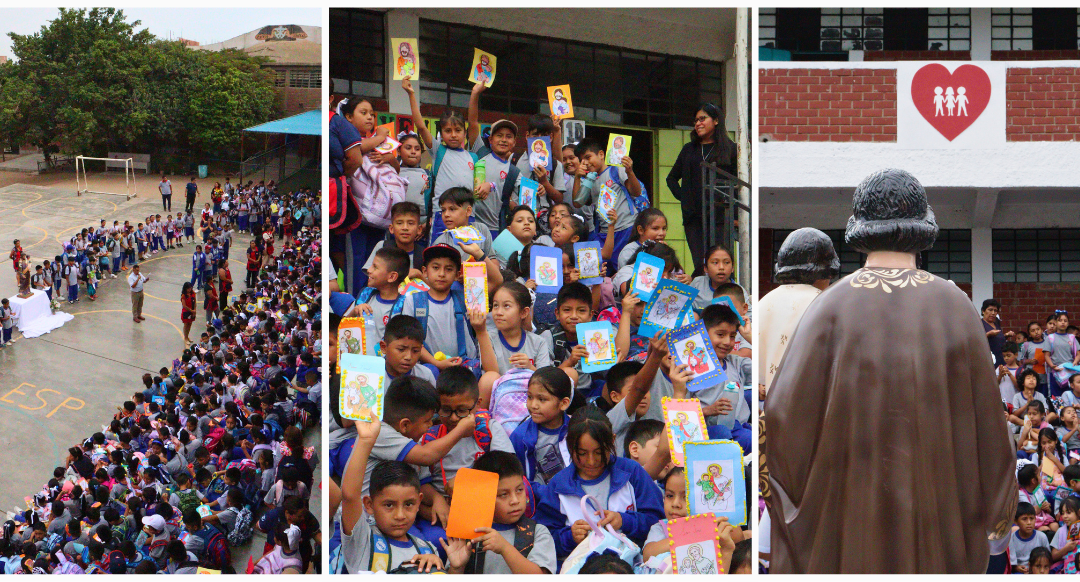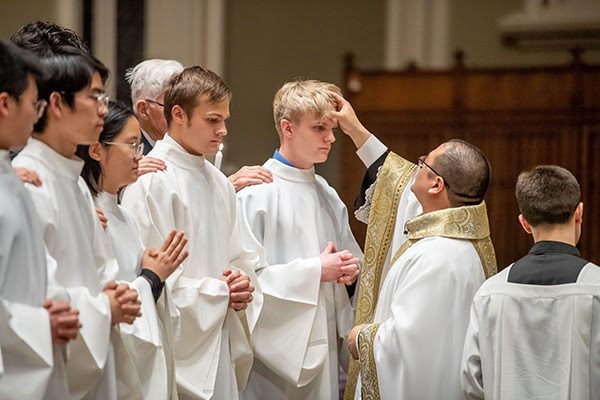Mike Ryan is a fourth-year professed seminarian. This year, he will be an assistant rector in Dunne Hall at the University of Notre Dame.
I had the opportunity in May to travel to the Sanctuary of Our Lady of Lourdes in Lourdes, France, for my ministry placement. I joined several French volunteers and spent time greeting pilgrims and praying with them in the Fr. Patrick Peyton Family Rosary Center. The Family Rosary Center is located on the grounds of the Sanctuary, just across the river from the famous Grotto where Mary appeared to a young woman (St. Bernadette Soubirous) in 1858. The Center is close to the “Chapels of Light” where pilgrims light candles seeking Mary’s intercession.
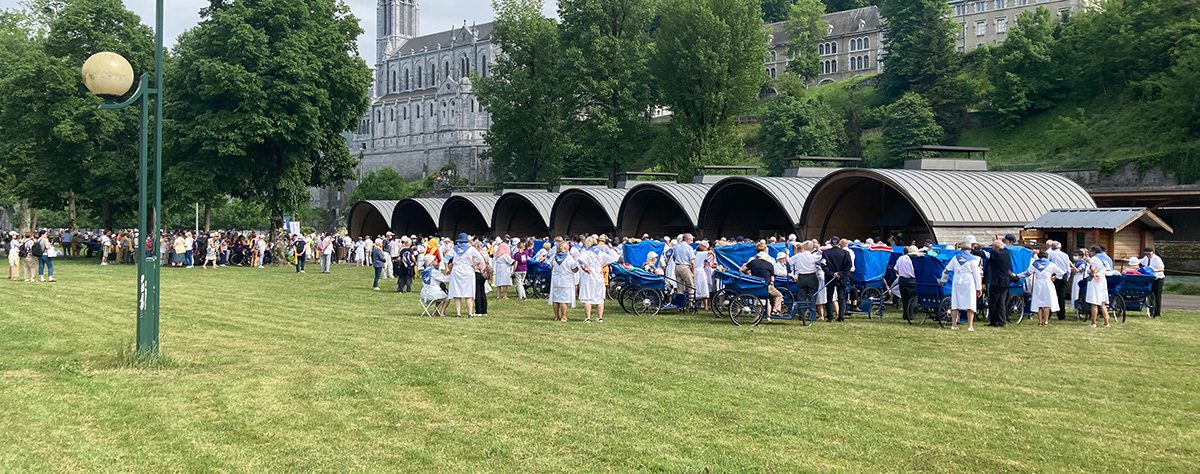
The Center features an exhibit describing the ministry of Venerable Fr. Patrick Peyton, C.S.C., in many languages – French, Italian, Spanish, English, Portuguese, German – and an exhibit based on Pope St. John Paul II’s apostolic letter Rosarium Virginis Mariae. We provided pilgrims with reflection booklets on the mysteries and prayer cards of Frs. Patrick Peyton and Blessed Basil Moreau in each of those languages (and a few more!), as well as offered pilgrims simple rosaries with a scapular of the Sacred Heart of Jesus. The pilgrims could then spend time in the theater to pray the Luminous Ministries with an immersive video.
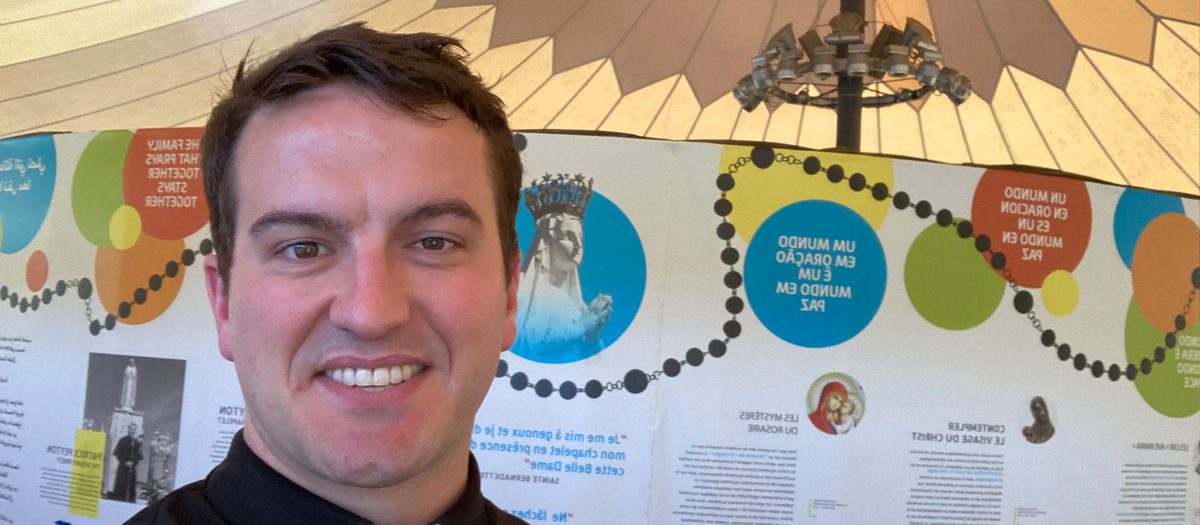
My favorite part of the Center was our wall of prayer intentions. One wall of the Center was covered with graphics of leafless trees.The Center invites pilgrims to write prayer intentions on leaf-shaped paper and affix the intention to the tree branch. We would pray for these intentions throughout the week as we prayed the rosary and would read them as the Prayers of the Faithful when we celebrated Mass at the Center. Rev. Pascal Garçon, C.S.C., would celebrate Mass. He directs the Center and brings great pastoral vision, a wide variety of language skills, and a fun spirit to the Center.
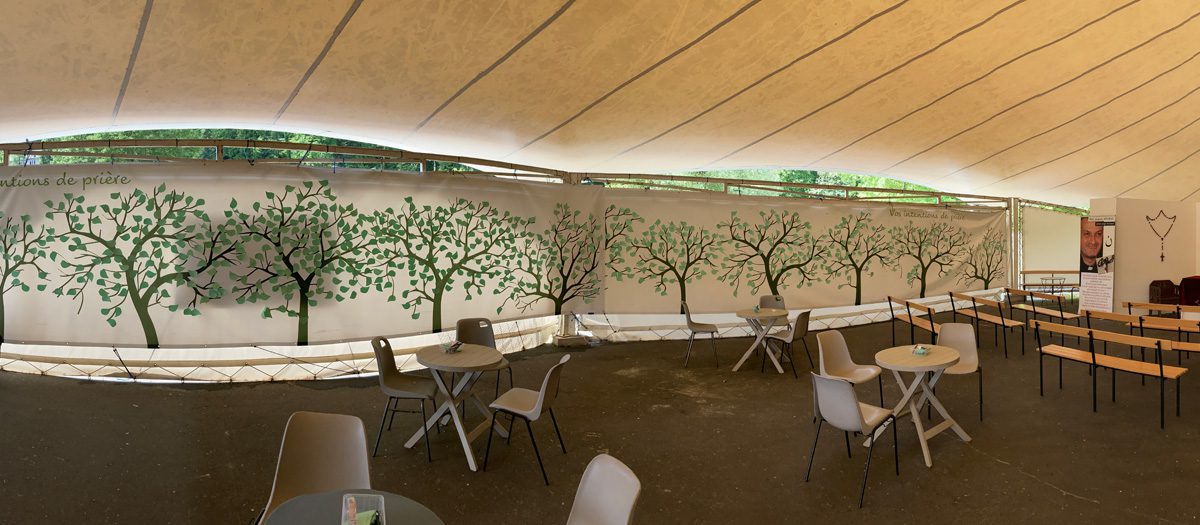
Our Constitutions say that “we must be men with hope to bring” (8;118), and also, “we find that we ourselves stand to learn much from those whom we are called to teach” (2;16). At this Holy place, with so many people traveling from afar seeking healing, I found that I was often not bringing hope to pilgrims, but instead, I was learning a deeper and more fully embodied vision of hope from each pilgrim I encountered. I learned much from the many men and women I interacted with. As I sat with pilgrims and listened to their stories as they wrote their prayer intentions or as we quietly prayed the rosary together I found myself filled with gratitude for this wonderful experience of ministry.
